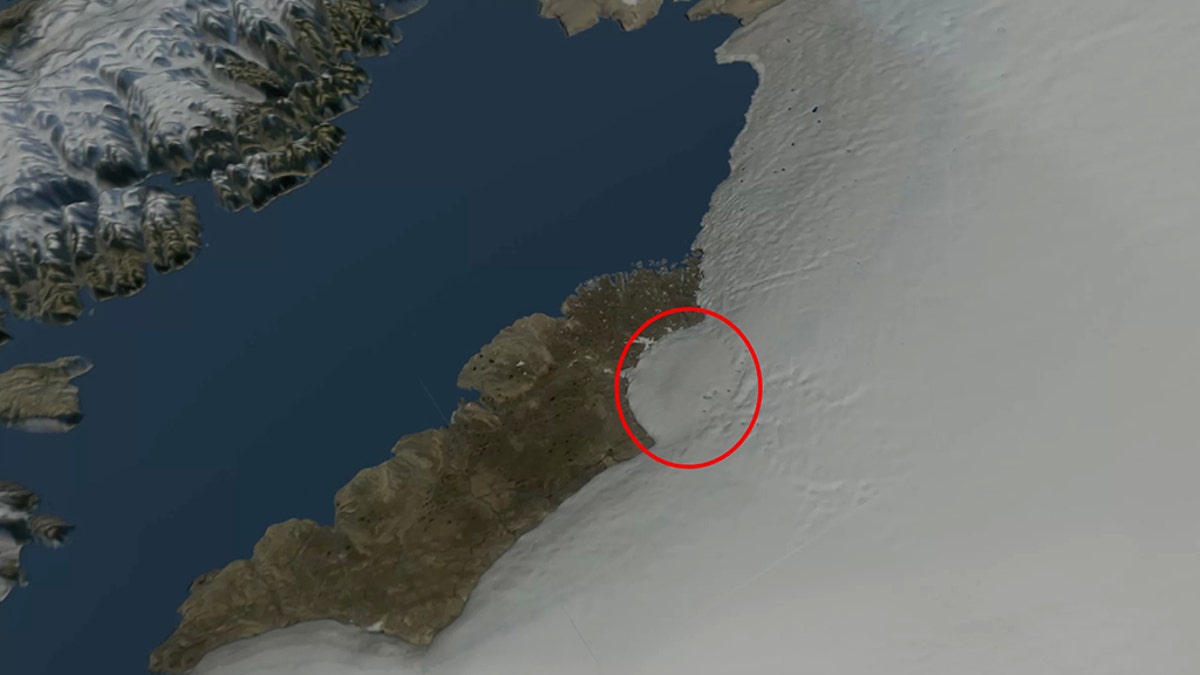
(Credit: NASA Goddard Space Flight Center)
An enormous crater, measuring 19 miles in diameter, has been found in Greenland, hidden under the ice. The crater was likely caused by an asteroid that hit the Earth "less than 3 million years ago," and is said by experts to have "rocked the Northern Hemisphere."
The crater was found in July 2015 but was only recently verified in a study published in Scientific Advances. According to NASA, the massive hole is "one of the 25 largest impact craters on Earth, measuring roughly 1,000 feet deep and more than 19 miles in diameter, an area slightly larger than that inside Washington’s Capital Beltway."
It is the first crater of any size found under Greenland's ice sheet and researchers are astounded by its preservation.
MYSTERIOUS INTERSTELLAR OBJECT IS NOT AN ALIEN PROBE, SAYS ASTRONOMER WHO DISCOVERED IT
"The crater is exceptionally well-preserved and that is surprising because glacier ice is an incredibly efficient erosive agent that would have quickly removed traces of the impact," said Kurt Kjær, a professor at the Center for GeoGenetics at the Natural History Museum of Denmark and lead author of the study in a statement on NASA's website.
It's unclear exactly how old the crater is. Citing the study, NASA says only that it formed less than 3 million years ago.
The study's abstract says: "The age of this impact crater is presently unknown, but from our geological and geophysical evidence, we conclude that it is unlikely to predate the Pleistocene inception of the Greenland Ice Sheet."
In an interview with LiveScience, David Kring, who studies impact craters at the Lunar and Planetary Institute in Houston and wasn't involved with the research, believes it could be from anywhere between 3 million and 12,000 years old. "It certainly should have created global effects, and we just have no hint or signature of that at this time," Kring told the news outlet.
DIAMOND-SHAPED ASTEROID CAPTURED BY NASA SPACECRAFT STUNS SCIENTISTS
Kjær believes that the crater’s condition indicates it likely occurred toward the end of the last ice age, placing it among the youngest craters on the planet. Known as the Pleistocene Epoch, the most recent ice age is generally defined as starting 2.6 million years ago and ending approximately 11,700 years ago
Some, including Kring, believe that the impact crater is not an asteroid, but Nicolaj Larsen is confident that it came from space, even if the impact to the planet's climate or life may not yet be known.
"Some of the quartz sand coming from the crater had planar deformation features indicative of a violent impact; this is conclusive evidence that the depression beneath the Hiawatha Glacier is a meteorite crater," said Larsen, one of the study's co-authors, in a statement.
COMETS AND ASTEROIDS COULD BE FLINGING LIFE ALL OVER THE GALAXY, STUDY FINDS
Researchers said they will continue to work to address what consequences if any, the crater caused for life on Earth and "how the meteorite impact at Hiawatha Glacier affected the planet."
Follow Chris Ciaccia on Twitter @Chris_Ciaccia